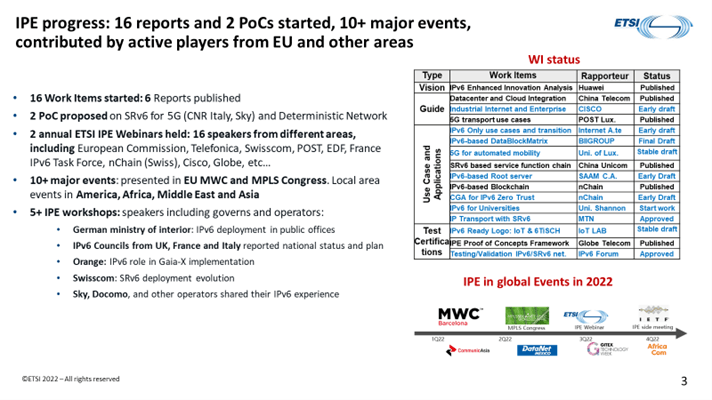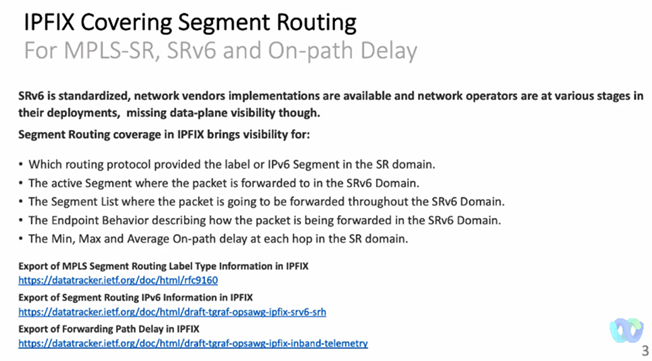The Internet standardization body, IETF (Internet Engineering Task Force), just held its 115th meeting in London from the 5th to the 11th of November. An IETF - ETSI ISG IPE side meeting was held with over 40 people attending on-site, and around 30 connected remotely, including IETF participants (involved in are members of IAB/IESG, Area Directors of INT/RTG/OPS/SEC), and ETSI ISG IPE management team and rapporteurs. The side meeting increased the connection and collaboration between ETSI ISG IPE and IETF in terms of: (1) ETSI’s activities, including ISG IPE’s role and scope, use cases, working items, (2) open discussion on IETF IPv6 protocol deployments, and (3) answer open questions from the floor.
Main outcomes of this IETF – ETSI ISG IPE side meeting are:
- Recognized that the work in ETSI ETSI (especially ISG IPE) is complementing the work of IETF
- Recognized that ETSI (especially ISG IPE) is helping to increase the awareness and the deployment of the IPv6 standard specified by IETF
- Emphasized that IPv6 is helping to accelerate the Digital Transformation
- Expressed Interest to transform this side meeting into regular appointments for the coming IETF meetings or as a formal collaboration between the two SDOs
Some Highlights from the IETF – ETSI side meeting:
Pete Resnick, IETF participant, Chair of IETF Internationalization Directorate, Chair of RFC Series WG, from Episteme, acted as the moderator of this meeting, opened the meeting by introducing the agenda and underlying the need for IETF to deliver functionalities that have concrete benefits in the Internet panorama with short TTM (Time to Market).
Latif Ladid, the ETSI ISG IPE Chair, reported the main progress of the group, highlighting how IPv6 is the key ingredient for digital transformation: more than 100 supporters from multiple industry sectors and all over the geography; 16 Reports created and 6 published on major scenarios; 2 PoCs just started; 10 events (e.g., MWC, MPLS congress). Many governments have IPv6 policies and recommendations, targeting equal opportunities to deliver and use internet services, to foster competition and enhance security. He invited to full cooperation with IETF in order to accelerate the industry adoption.

Thomas Graf, Swisscom Distinguished Network Engineer, underlined how SRv6 is commonly standardized, network vendor implementations are available and network operators are at various stages in their deployments. SRv6 enhance the possibility to collect e2e data and monitor the network status as well for evolution towards digital twin.
Thomas led an IETF Hackathon activity within the event and demonstrated how to monitor delay within IPv6 network using extension headers.

The panel of presenters received questions at the end of the meeting from the floor on the technical subjects presented, on ISG IPE activities and future planning. An IETF AD outlined the experience in Belgium in getting government, regulator, industry and ISPs to work hand in hand and drive a smooth adoption of IPv6. An IETF IESG underlined the necessity to complement the IETF activities with ETSI IPE taking care of activities like business development and business cases.